
What an excellent choice of set text the powers-that-be made for A level seasons 2018 and 2019, in the form of selections from Aeneid Book 8. Specifically: King Evander tells Aeneas the story of Hercules and Cacus; and Evander's farewell to his son Pallas. In providing a new edition of the whole book – rather than just the selection for examination, as occurs with some other extracted set texts – Keith Maclennan and Bloomsbury have ensured that his work will continue to apply when (for example) the selection for (say) 2026 and 2027 focuses on the great ecphrasis of the Shield.
McLennan begins with an economical and useful historical preamble, guide to the crisis in the Roman state and brief biography of Virgil. Whether it was necessary also to provide a 10-page synopsis of the whole epic, when students will surely have access to the introductory material in West's Penguin translation (i.e. the summaries and commentary in Penguin pp x-xlii) is debatable.
Less controversial is how clear and helpful Maclennan proves to be about Virgil's style, since he furnishes much perceptive guidance on such things as pace, tone and intertextuality; though there would have been more, re the last of these three, for students to get their teeth into, had it been the ‘Shield’ episode that was set. Matters of metre and elision are also detailed, to a degree that makes this a genuinely ‘free-standing’ guide to Virgil's achievement in epic poetry. This sort of feature will be especially welcome to those (perhaps recently developed) Classics departments that don't have old copies of Camps and Gransden (for example) on the classroom shelf.
When it comes to the main meat, i.e. Maclennan's notes on lines 86-279 and 558-584, students can be confident that they are in the hands of a consummate professional. Whilst he is not shy of demonstrating his familiarity with much earlier scholars such as Servius and Conington, he is also generous with practical hints, poetic insights and references to the Odyssey and the Iliad where pertinent. He is especially good and thorough on the geography and symbolic significance of the cult of Hercules of the Ara Maxima; and on what Virgil brings to the character and nature of Cacus for his narrative and poetic purposes.
Whilst the ‘Index of Terms’ at the back of this book is adequate, students will find a more comprehensive one in the new edition of Aeneid XI (specified for 2020 and 2021) by Ashley Carter for Bloomsbury. Teachers should obtain at least one copy of Carter's book right away, specifically for the excellent ‘Catalogue of stylistic devices’, pp.19-26.
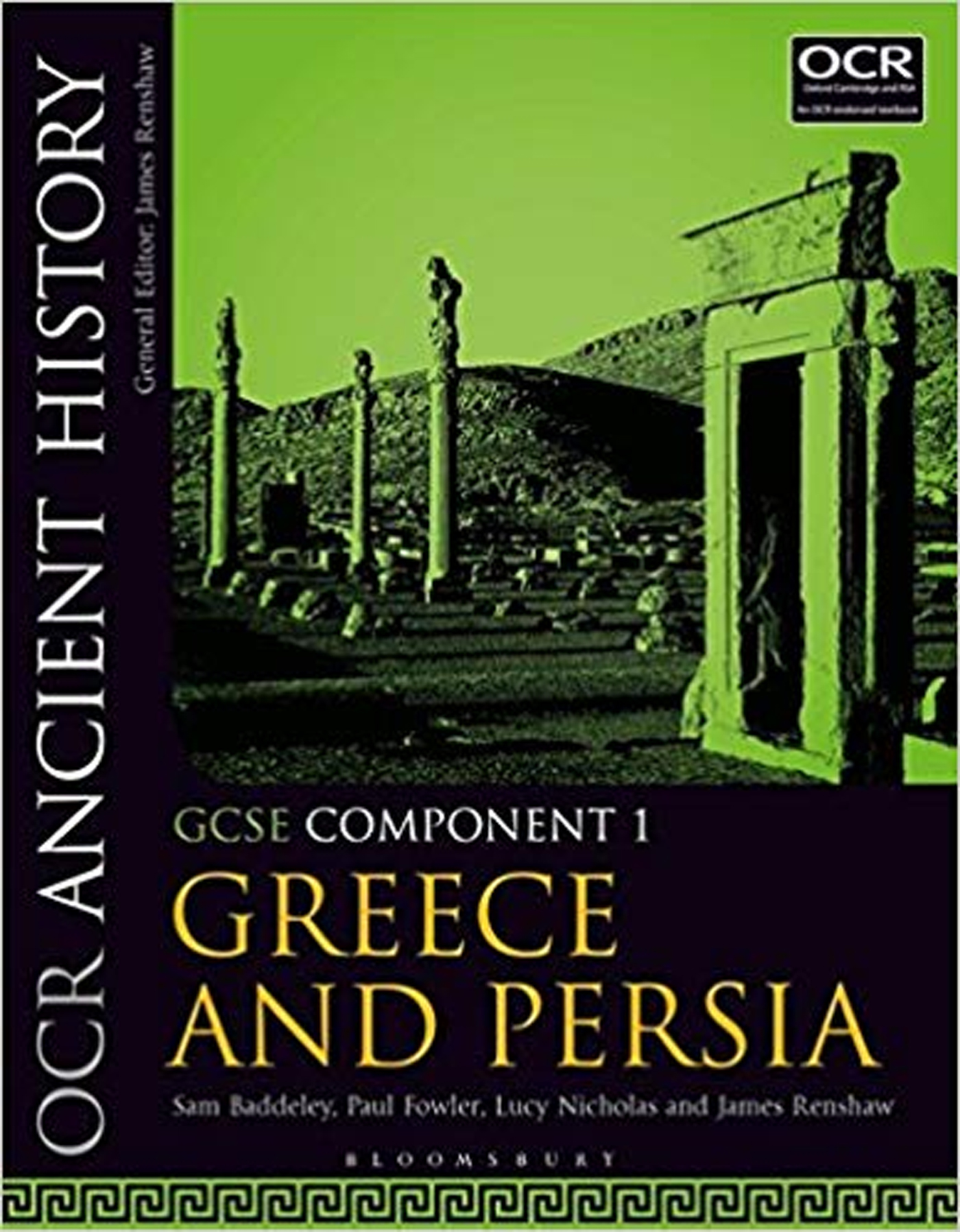
Component 1 contains an Ancient History Period Study on Greece and Persia, 559-465 BC, with three Depth Studies: From Tyranny to Democracy; Athens in the Age of Pericles; Alexander the Great. Clearly, this makes the volume a very useful textbook and it is not as heavy as some other Bloomsbury volumes. All told, the late archaic, classical and late classical periods are covered comprehensively, in a student-friendly package. Full colour is missing, but the reproduction and clarity of monochrome illustrations and photographs are very good.
Prescribed Sources, Maps and Overview areas are picked out in two shades of blue, however, and the layout is immediately both engaging and logical. Throughout the Studies, due acknowledgement is given to alternative explanations or theories, such as the lesser known, non-Greek sources on Cambyses, for example; the plausibility of the sources is also examined in some detail, something which has growing modern relevance.
Such textbooks are welcome, particularly as three of the four authors are practising teachers and this is obvious in the readable text. There is copious and useful help in the form of What to Expect in the Exam sections; there are also a Glossary, a list of Quotation Sources and an Index. Let us not omit mention of the companion website; its copious resources will need some teacher guidance and input, but it is very accessible and will be very useful to diligent students.
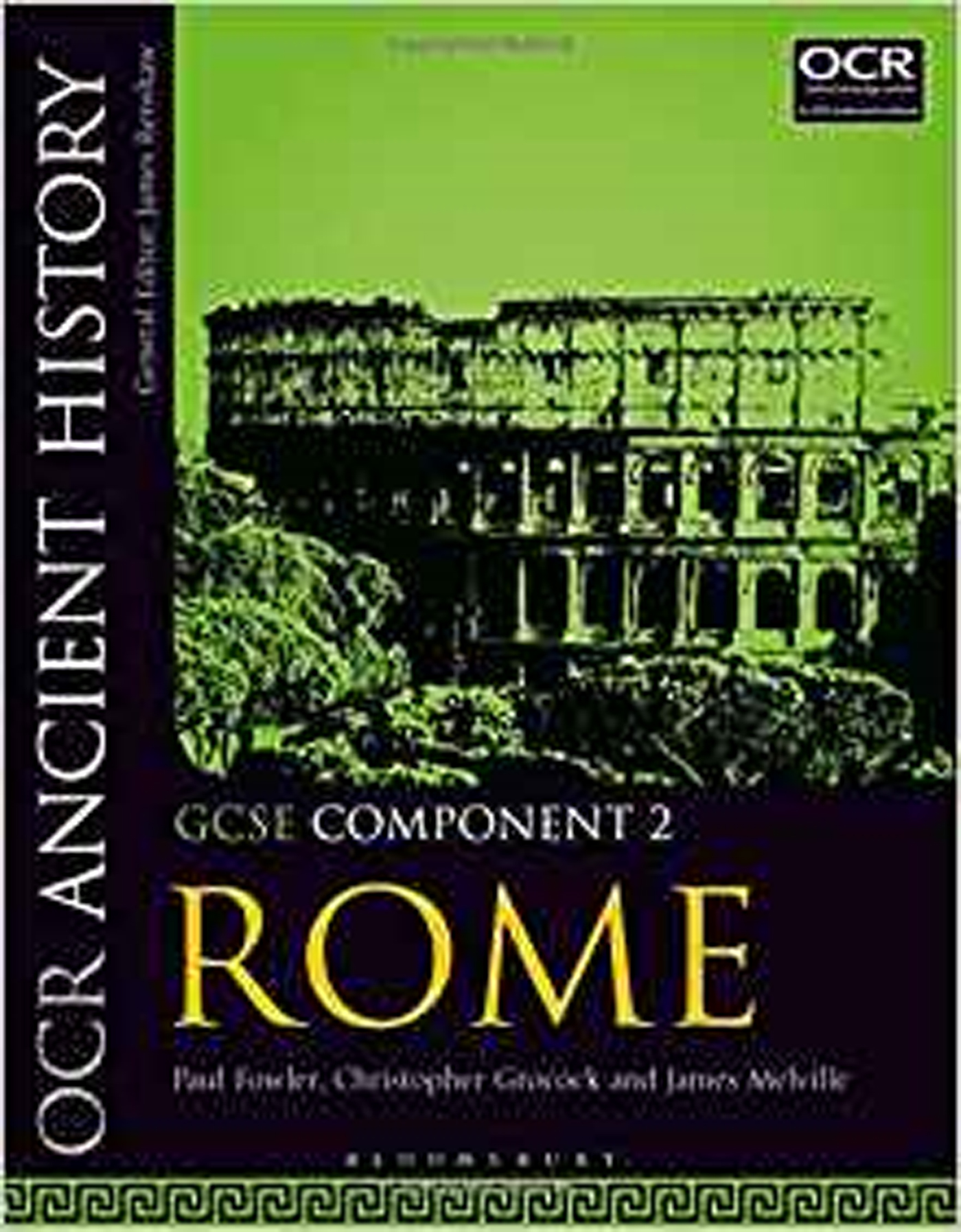
For the new GCSE Ancient History specification, OCR and Bloomsbury have collaborated to create two separate volumes: one covering the Roman period and depth studies, and one the Greek. Those on limited departmental budgets may be grateful for the separation, since, although both volumes are needed to cover the whole course, one could stagger the outlay by teaching Component 1 in the first year of the GCSE course and then Component 2 in the second (or vice versa, of course).
Before continuing, I should say that I have so far taught my very mixed-ability class the Rome Period Study and look forward to teaching them the Cleopatra: Rome and Egypt Depth Study next year. Thus, this review will focus on those two parts of the Component 2 textbook while making more general points about the usefulness of the book as a whole.
The Component 2 volume opens with a brief guide to the book itself, including how to identify exam-style questions, prescribed sources, and stretch and challenge tasks. The rest of the book is divided into the Period Study (The Foundations of Rome), followed by each of the Depth Studies (Hannibal and the Second Punic War, Cleopatra: Rome and Egypt, and Britannia: From Conquest to Province). These are each broken down into subsections focused on the themes of the topic set out in the specification, each with an exam-related activity and a clear list of bullet points designed to promote review of knowledge and pose questions to test students’ understanding. Each chapter has suggested Further Reading and a specific couple of pages describing What to Expect in the Exam. Right at the end, there is a glossary of key terms and, handily, the source of all quotations and illustrations.
One of the most helpful features of the book is the explicit explanation of the requirements of the exam. Prescribed sources, recommended teaching content, practice exam-style questions, and exam tips stand out boldly from the rest of the text in blue. Along with those suggested in the What to Expect in the Exam sections (and the sample paper provided by OCR online), there are sufficient examples of each type of question to give teachers and students a good idea of how questions will be worded. It would be useful for Bloomsbury to produce mark schemes for all questions in the textbook and make them accessible to teachers via the companion website, which has the potential to be useful, but currently has very little content and is certainly no rival to www.theclassicslibrary.com.
For the Depth Studies, OCR provides a booklet online with all the prescribed sources. However, it is worth bearing in mind that for the Period Study, many of the useful grey-boxed study activities refer to (sometimes lengthy) extracts from Livy or Dionysius, which teachers will need to provide. These extracts, despite not being prescribed sources, are necessary for a thorough understanding of the topic. Thus, the textbook should not be considered a complete study resource.
Illustrations are sharp and clear, although the images are monochrome. Archaeological sources are clearly labelled throughout and prescribed sources in the Depth Study sections given their own information boxes providing a description and brief explanation of their significance. The maps, some of which (e.g. the vicinity of Rome in the 7th century) have been very hard to acquire otherwise, are excellent and coloured in shades of blue and grey.
It should be noted that quantity and nature of the Stretch & Challenge boxes vary between chapters. In Foundations of Rome, while the author has provided thought-provoking additional information and points for students to read and discuss, they are not usually presented explicitly with extension activities or questions to attempt. This is the case for almost all the S&C boxes in the Cleopatra chapter, but there are far fewer of them, which is a shame.
The text, although challenging in places, is accessible to the majority of students and covers key events in each topic in sufficient detail. However, the narrative is written rather more engagingly and the significance of particular events explained with greater clarity and much richer detail in the Cleopatra chapter than in the Foundations of Rome. Technical vocabulary identified by the authors as challenging is defined in the margins. The text would benefit from a thorough review to correct typos, some of which have the potential to confuse students. For example, on page 67, there are two mentions of the ‘Volero-Horatian Laws’, suggesting a connection with Volero Publilius – completely the wrong person - rather than the ‘Valerio-Horatian Laws’.
Overall, despite its unevenness, the Component 2 textbook is undeniably a very welcome resource and will save those of us teaching GCSE Ancient History a great deal of time.
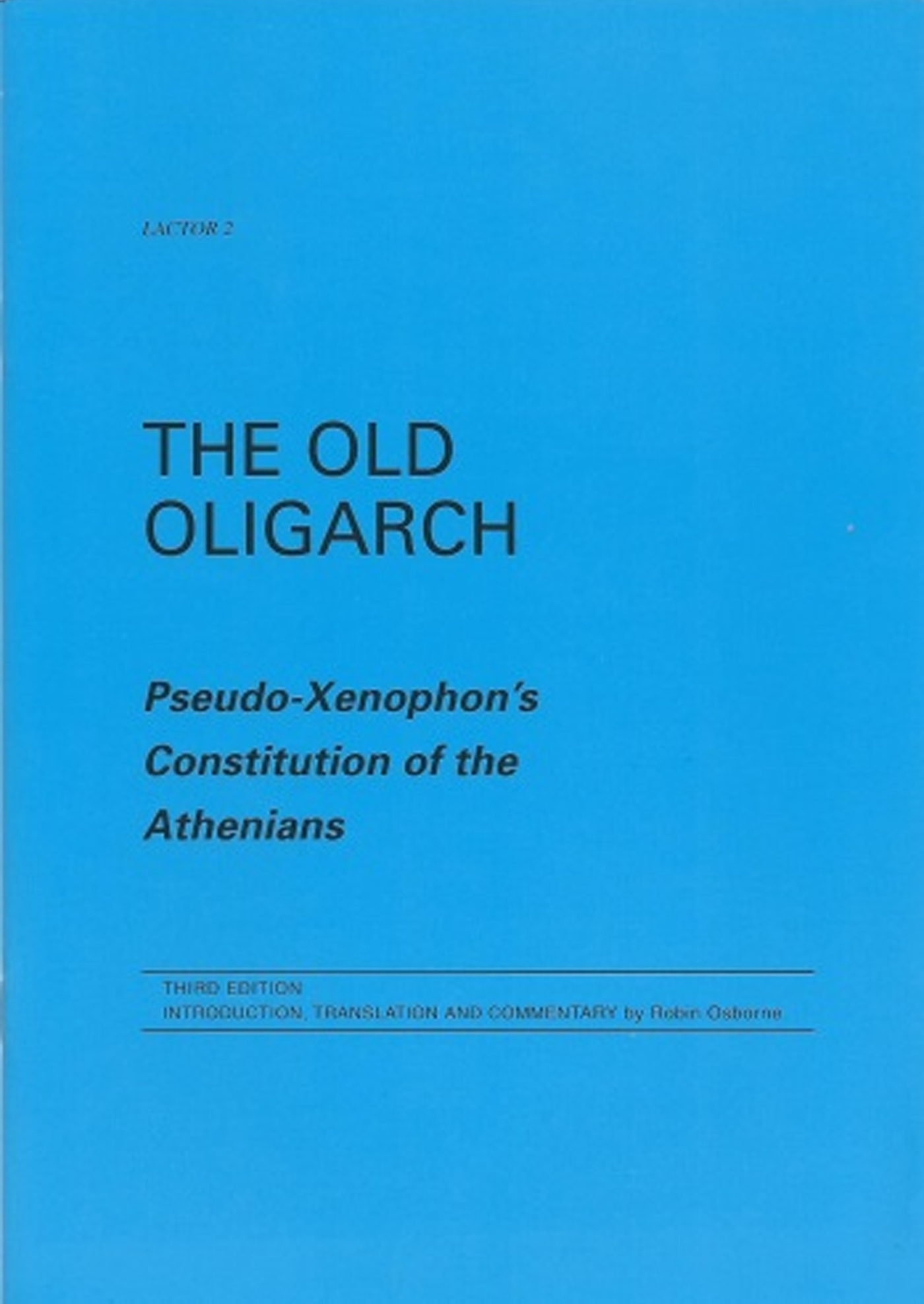
Osborne is characteristically modest in his Preface to the third edition, but he has produced a superb examination of this short, puzzling text, which is both readable and comprehensive. At the same time he does not shy away from any controversy, particularly as regards the questions of date and purpose.
Osborne has expanded the Introduction of previous editions into a veritable mini-thesis, which manages to cover all the questions students of the text wish to be answered, particularly the majority who will not have any Greek. In respect of the translation itself, he has moved closer to the original Greek, which is to be welcomed, in order to preserve the evaluative nature of the many ‘loaded’ terms used by its author; Osborne has provided a glossary of these terms and their closest approximation in English.
Osborne has a healthy respect for the author of the piece, as shown by his praise (on p. 3) of the work's digressive development, which has the effect of making it look like a conversation, without the author's losing track of his essential argument.
Apart from the key terms mentioned above, Osborne has not materially changed the translation, since the Greek syntax is, in most places, fairly concise and lucid. He has also provided the translation with copious notes, greatly expanded the Bibliography and provided a handy Index.
The scholarship thus displayed, in a short work is most impressive. As the default examination in English of a crucial text for the study of Athenian democracy - which it will surely become, this book, modestly priced, will become a must in many libraries, both personal and public.
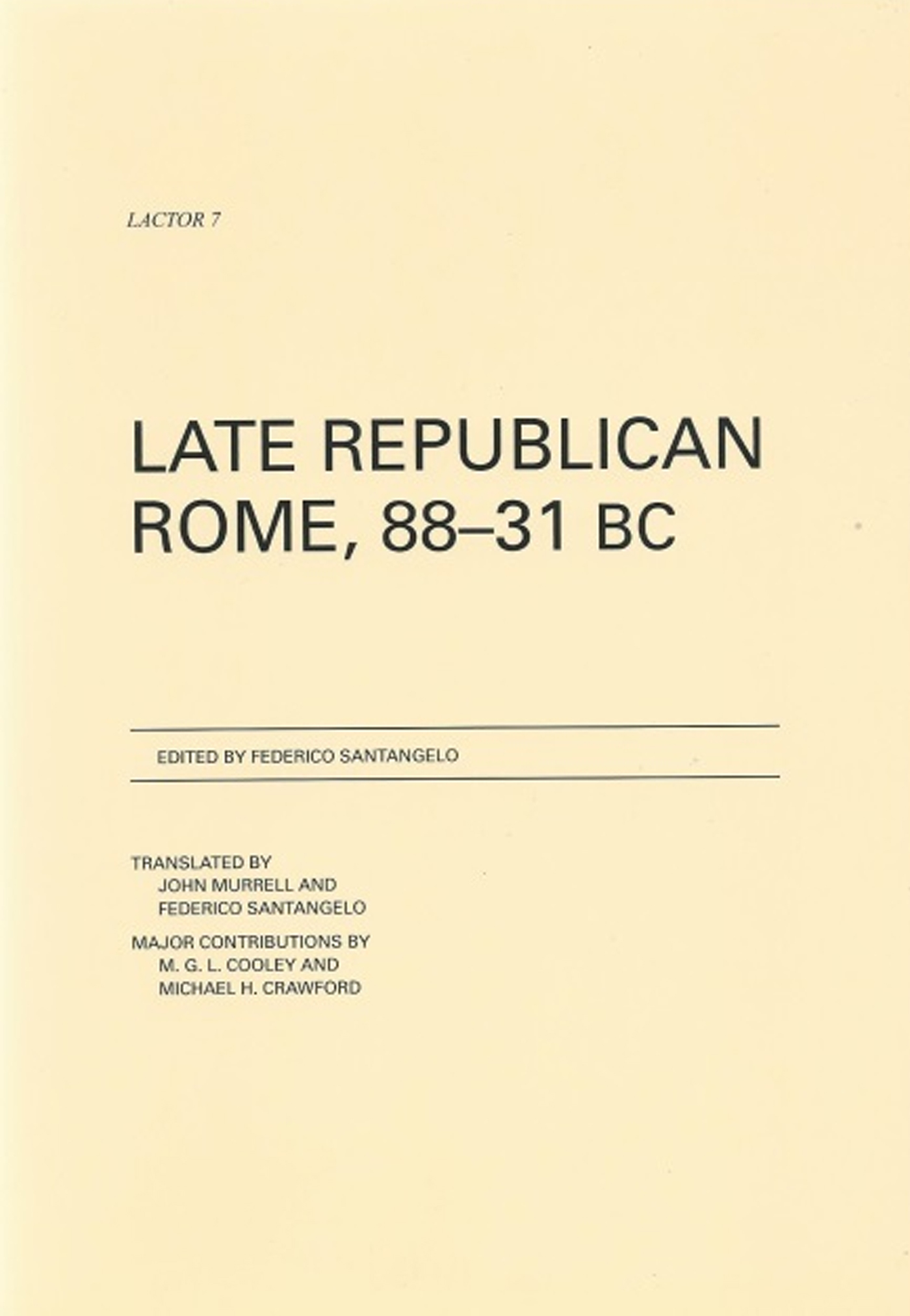
As the preface states, this thoughtfully compiled and most accessible sourcebook replaces LACTOR's seventh instalment (the now out-of-print Roman Politics 80-44 BC), providing a much broader scope than its predecessor's focus on the era's political intrigues. Though the spotlight remains firmly on the period between Sulla's march on Rome (88 BC) and the aftermath of Octavian's victory at Actium (31 BC), there is ample examination of the social climate, which lends itself to the editor's expressed aims of doing justice to the raft of ‘economic, social, and cultural developments’ during the period, while also ensuring that the volume does not intimidate students (it is, after all, designed for use in the classroom) by interlacing the selections with a lively and unstuffy commentary which seeks to provide a more comprehensive picture of Roman social life in the Republican era.
Buoyed by a diverse collection of judiciously chosen translations from the well-known (Plutarch, Appian, Cassius Dio and Cicero loom large, as does Res Gestae and Virgil's Aeneid) to the more obscure such as Orosius (the Christian author who wrote a history of Rome that relied heavily on Livy), Sulpicius, and The Gronovian scholiast, the volume is so much more than a mere listing of relevant texts with explanatory notes. Rather, the collection is presented as a concise thematic history with the sources helping to tell the story of Rome's tumultuous transition from Republic to Empire.
The opening section provides a general narrative of key events in the lead-up to the dissolution of the Republic, bolstered by translations that are comprehensive and illustrative. Starting with a prologue entitled ‘Land and Politics in Republican Italy, 133-88 BC,’ Appian guides us through a brief history of ager publicus and the background to the social war (91 BC) while Strabo's account of the Apennine regions (Geography 5.4.2.) is inextricably linked to the Social War, providing a suitable background to what unfolds over the next 200 pages. The ‘Narrative, 88-44 BC’ portion follows, deftly broken into 15 main sub-sections (including ‘The Civil War and Sulla's Victory,’ ‘63 BC: A Fateful Year?’, ‘The Ides of March and their Aftermath,’ and ‘An Epilogue: the Advent of Monarchy’), which will make for an unimposing introduction for the nascent scholar; likewise, the succinct summaries which follow each entry not only contextualise the passages, but allow for some discussion of reliability (‘Appian's contention that the war between Rome and the Italian allies (91-88 BC) is rooted in Roman factional strife and belongs within the account of the Civil Wars should not be taken at face value.’ (pg. 21)), while the in-text referencing will provide rich avenues for further reading.
The real value of the new volume comes in the second section, where the chronological treatment is swapped for a thematic one, thus adding an alternative entrance point for readers – those struggling with the tangled web of Republican Roman politics can find solace in headings encompassing a wider range of societal aspects such as ‘The Imperial Economy,’ ‘Law, Lawyers and Lawcourts,’ ‘Intellectual Life,’ and ‘Wives and Daughters in Late Republican Society and Politics.’ As with the previous section, the explanatory notes are well thought out, though here, introductory paragraphs ahead of each section provide summaries in the lead up to the extracts – a practice which may have been beneficial across the volume as a whole. Nevertheless, the chapters in this section do an admirable job of encompassing a wide range of sources that paint a clear picture of the social and political climate, aiding in the editor's attempts at crafting a more comprehensive and user-friendly picture of the time.
In addition to the translated sources there is a valuable selection of archaeological evidence in the form of inscriptions and coins, drawn mostly from Ghey, Leins & Crawford's dazzling catalogue of Roman Republican coins in the British Museum (2010) which provide a lush visual element, alongside the maps of Roman Italy, the Roman Empire and Rome in the late republic, and the campaigns of Caesar, Crassus and Pompey. Also likely to pique student interest are the notes on sources which provide the budding scholar with a clear biographical survey of the key contributors (Cicero's goes for three paragraphs; most others encompass four lines), even going so far as to discuss limitations of access and mention any possible bias. There are however no explanatory footnotes, which is unfortunate as those new to the discipline may require clarification of some of these texts – fortunately, the bibliography provides a range of further reading not likely to overwhelm the reader (especially as it is restricted to English-speaking scholarship) though, it is restricted to publications that have appeared over the last 30 years – nevertheless, this decision is in keeping with the publication's ultimate aim of accessibility. To this end, the sourcebook is an extremely useful collection for the study of Roman history, particularly for its diversity of topics and wide range of literary, epigraphic and archaeological source materials.
See http://www.lactor.kcl.ac.uk/ for details of how to purchase LACTORs.
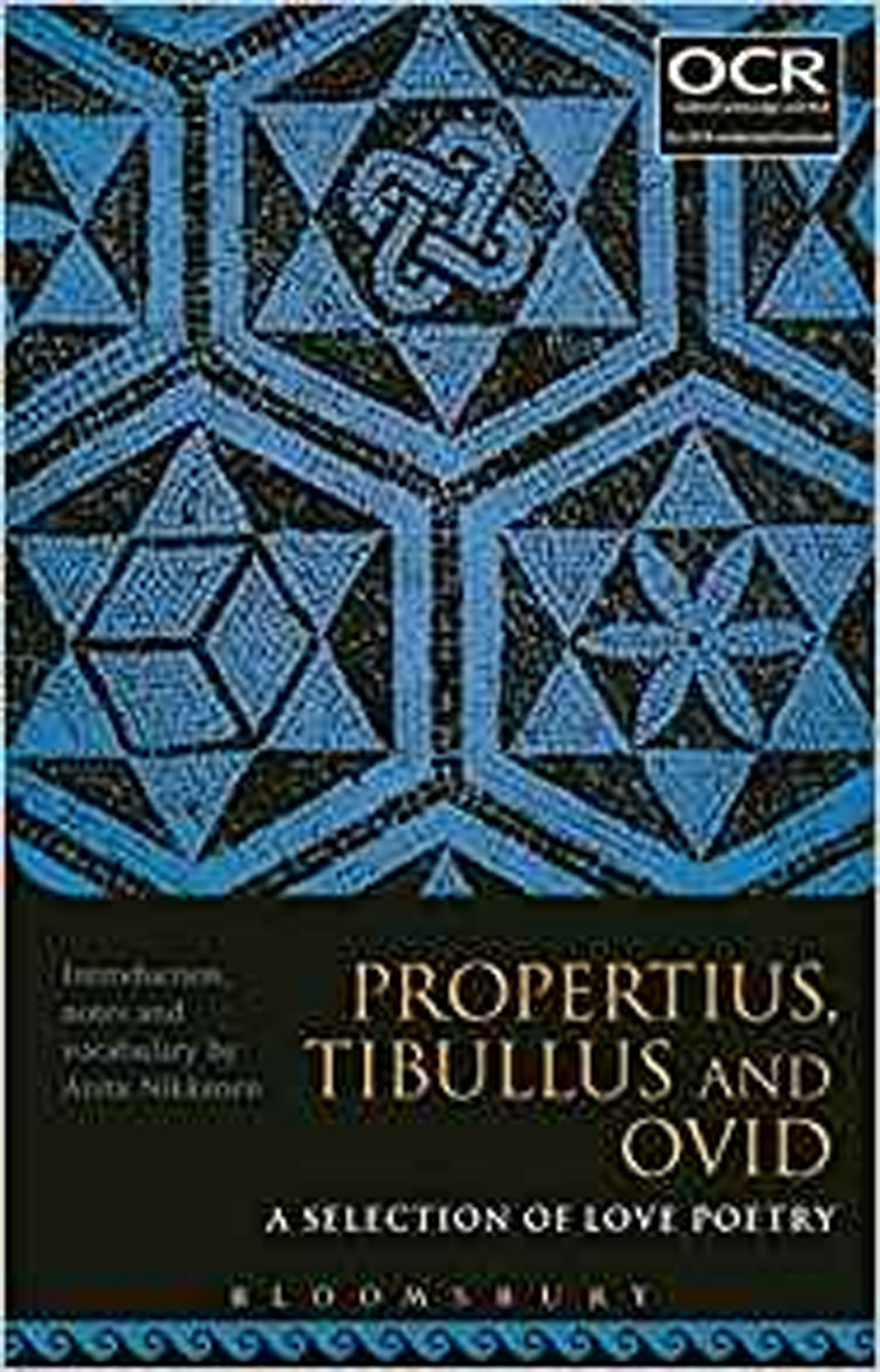
The print list price of £16.99 for this slender volume of Elegiac poetry (only valid for the A level OCR exam from 2017-2019) makes this an expensive investment for a class. While it carries the reassurance for a teacher of being part of the Bloomsbury/OCR exam board-endorsed series and is in many ways a useful volume, there are however some drawbacks.
Comfortingly, and like the other volumes in the series, the A level and AS level prescriptions are neatly identified with corner labels on each page. The vocabulary list helpfully asterisks words that appear in the Defined Vocabulary List for the OCR AS level exam. As with the rest of the Latin series, this list is inconveniently placed at the back of the book. Some newer anthologies provide the relevant vocabulary on a facing page, which can be covered for challenge, but reduces word-hunting during the early stages of reading the text. Unfortunately, this is not the case here.
The OCR exam requires certain poems (Propertius 4.7, Tibullus 2,4 and Ovid Amores 2.19) to be studied in English. However, this volume does not provide this English text, requiring teachers either to produce their own or to search the internet for that rarest of things: something acceptable and with open access. I can't help but feel that this is an obvious omission in a volume that is ostensibly intended to leaven a teacher's burden.
Anita Nikkanen's introduction provides a helpful background which sets out the social and political scene at the time of the Roman elegists as well as providing a description of style and genre that includes the main recurrent themes of Roman elegy. A section on rhetorical and poetic devices is illustrated with examples from the texts themselves: excellent for games of ‘spot the technique’ with students.
The section on metre provides a beginner's guide to elegiac metre. This exposition, although clearly explained, is hampered by its layout and appears as a rather impenetrable wall of text, off-putting to A level students and this teacher!
A further section summarises the content of the poems, both those prescribed for Latin and also the poems that must be studied in English. But as this is neither a direct translation of the text nor a summary of the main themes to be found in them, its use eludes both me and my pupils.
All too often in commentaries there is an implicit assumption of knowledge, where answers to tricky grammatical issues are merely alluded to with frustrating opacity. Anita Nikkanen's commentary is not of this type. Rare have been the occasions when my pupils and I have failed to find a clear and helpful explanation of the grammar or mythological allusions. Often a lucid translation is also provided and there are appealing touches of gently dry humour.
This is a volume whose faults are due more to the traditional form of this sort of book than the editing. The commentary itself provides an excellent support for teachers pressed by time, or for students working alone, in understanding the text.
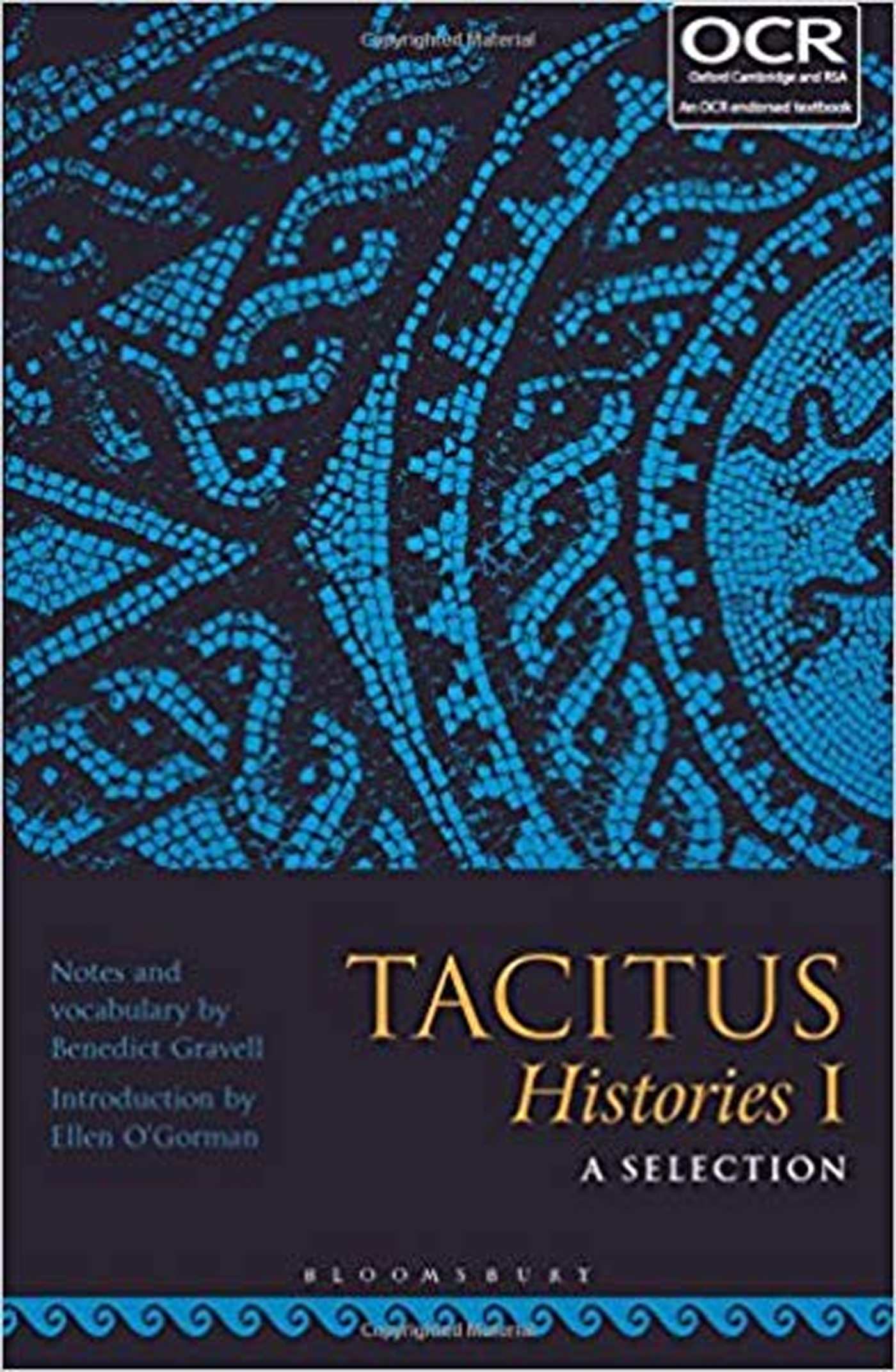
This book covers the prescribed selections from Tacitus’ Histories I for the OCR A level Latin literature prose specification for examinations from June 2019 to June 2021. This volume offers students and teachers guidance on tackling Tacitus’ text and all its hardships. A concise but thorough introduction by O'Gorman provides a good introduction to Tacitus’ life and style as well as to the content and scope of Histories I. Of particular use are pages 17-32, where a clear outline of the initial events of AD 69 is offered with a focus on the main characters involved and their role in the political turmoil (Otho and Piso: the rivals for succession; Galba and his advisors). Names of individuals and key terms are generally but not consistently highlighted in bold. These are, however, usefully listed in two separate glossaries, one of names and one of technical terms, at the end of the commentary. The glossary of technical terms offers rhetorical devices in bold to distinguish them from historical terms such as ‘donative’ or ‘suffect consul’. Three practical maps at the end of the introduction help students and teachers to visualise the location of the events in AD 69. The map of the Roman Empire divided by provinces, in particular, supports the reading of first chapters describing the uprising of the different legions. Map 2 and 3, respectively depicting the Seven Hills of Rome and the Forum Romanum, help students to locate the movements of the mob stirred up by Otho against Galba and Piso. The maps are followed by a succinct but helpful timeline ranging from AD 54 (Nero's death) to AD 117 (terminus post quem for Tacitus’ death and the publication of his Annals). The Latin text is given in a clear format, with brief English summaries covering the content of the chapters not needed for the specification and the AS and A2 sections clearly marked. The commentary is concise but offers good guidance through the text, with translation tips and stylistic points. An example is a legatis . . . crimen ac dolum ultro compositum (7.2) that Gravell suggests be made active to aid the translation together with the possible interpretation of crimen ac dolum as a hendiadys. A detailed vocabulary list, with the words contained in the OCR's Defined Vocabulary List for AS clearly marked with an asterisk, concludes this handy volume that will be treasured by students and teachers alike.
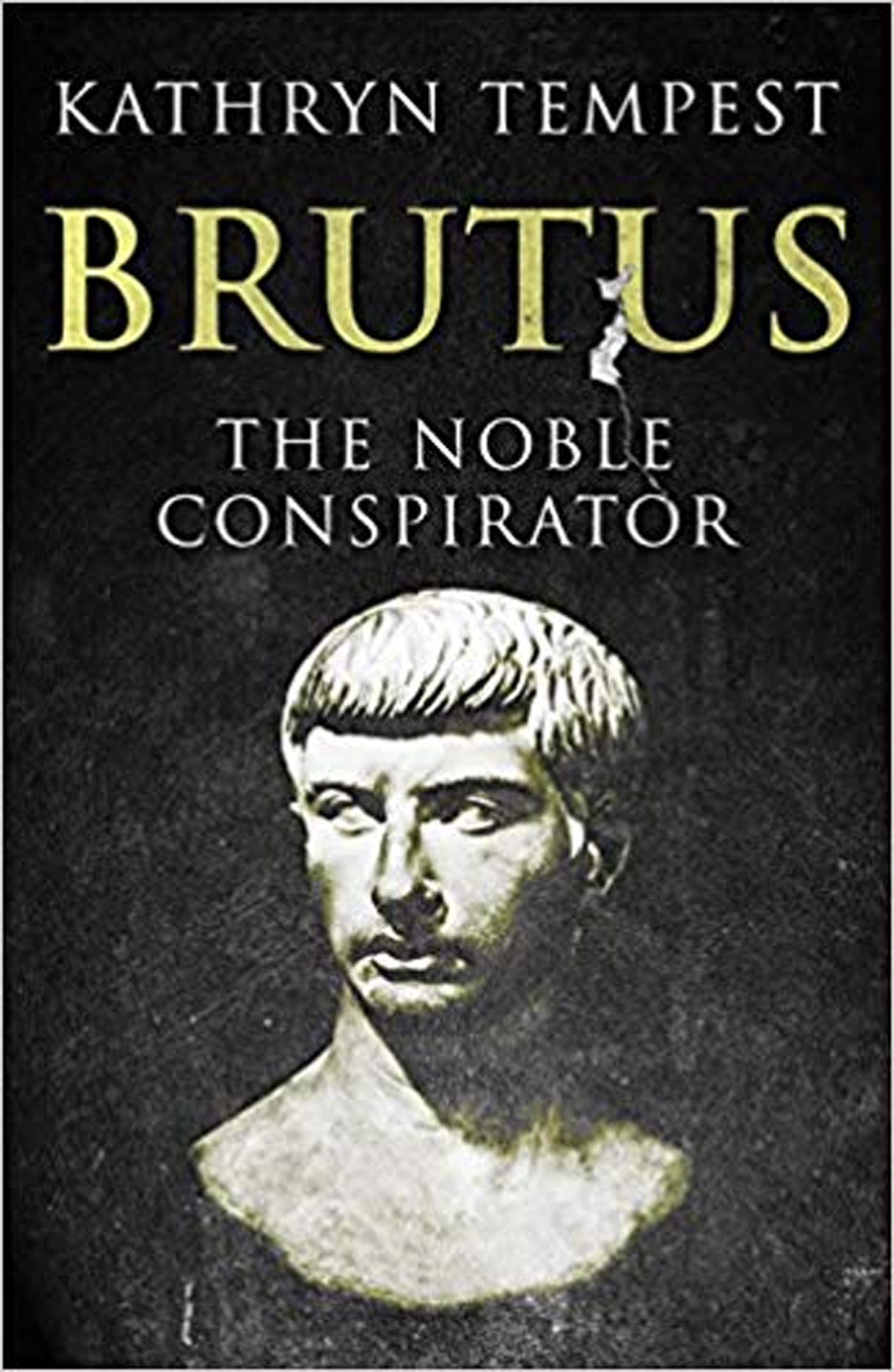
Having pored over Kathryn Tempest's Cicero: Politics and Persuasion as a university student, I was keen to review her biography of Quintus Servilius Caepio Brutus. In terms of audience, the book is accessible enough for sixth form students and at times reads like a novel. Furthermore, the book is useful for teaching Politics of the Late Republic as part of the A level Classical Civilisation course. Not only is Tempest's Cicero part of the suggested reading list in the OCR textbook but the course focuses on three men whose lives crossed meaningfully with that of Brutus: Cicero, Caesar and Cato.
What makes Brutus such a compelling character in Tempest's account is perhaps what makes him so elusive. Here is a high-born, talented and well-educated young man, admired by some of the most emblematic figures of his troubled times, who falls tragically short of expectations after the Ides of March of 44BC. Tempest invites us to look at Brutus from two character-defining certainties. First, he was a member of the nobilitas. Second, he conspired to kill his protector and saviour (and, according to salacious and most probably erroneous gossip, his father), Julius Caesar.
Tempest notes (p23) that, for the Romans, the word nobiles meant ‘well-known,’ and indeed Brutus could not have come with a better pedigree for Republican Rome – not only did he boast consuls in his ancestry, but two of his ancestors had practically founded the Republic. Livy reports that it was the legendary Lucius Junius Brutus who murdered the last and detested Roman king, Tarquinius Superbus, by pretending to be, as his name suggests, brutus (dumb). This Brutus then went on to establish the Republic and became its first consul in 509 BC. On his mother Servilia's side, Brutus descended from Servilius Ahala, killer of another would-be tyrant, Spurius Maelius, in 439BC. These two men figured prominently on a family tree painted onto Brutus’ atrium and no doubt were honoured through a display of ancestral wax imagines.
The word noble, however, takes a different connotation if used in relation to Brutus’ motives for killing Caesar – is it a high-minded act or just a treacherous deed and a pitifully late attempt at protecting the patricians’ status? Is this the Shakespearean Brutus who declares that it is ‘not that I loved Caesar less but that I loved Rome more’ or the grotesque traitor in the lowest depths of Dante's Inferno, so repulsive that he shares with his co-conspirator Cassius the same punishment as Judas Iscariot, namely being eaten by Satan himself?
Tempest suggests that this doubt created by Brutus’ legacy can be seen through the prism of the second part of the title: the conspirator. Brutus came from a family where the benchmark was set vertiginously high but also he belonged to a time when the competition among young patricians for the highest posts in the state was robust. And despite Brutus’ alignment with Cato Minor, his squeaky clean uncle and father-in-law, whom he accompanied to the East, there is some evidence that Brutus did some shady business in Cilicia, as attested by Cicero, who succeeded Cato as governor of the province.
Tempest brings all the sources together for her audience to draw their own conclusions and the picture that emerges is of a man as conflicted as his own times.
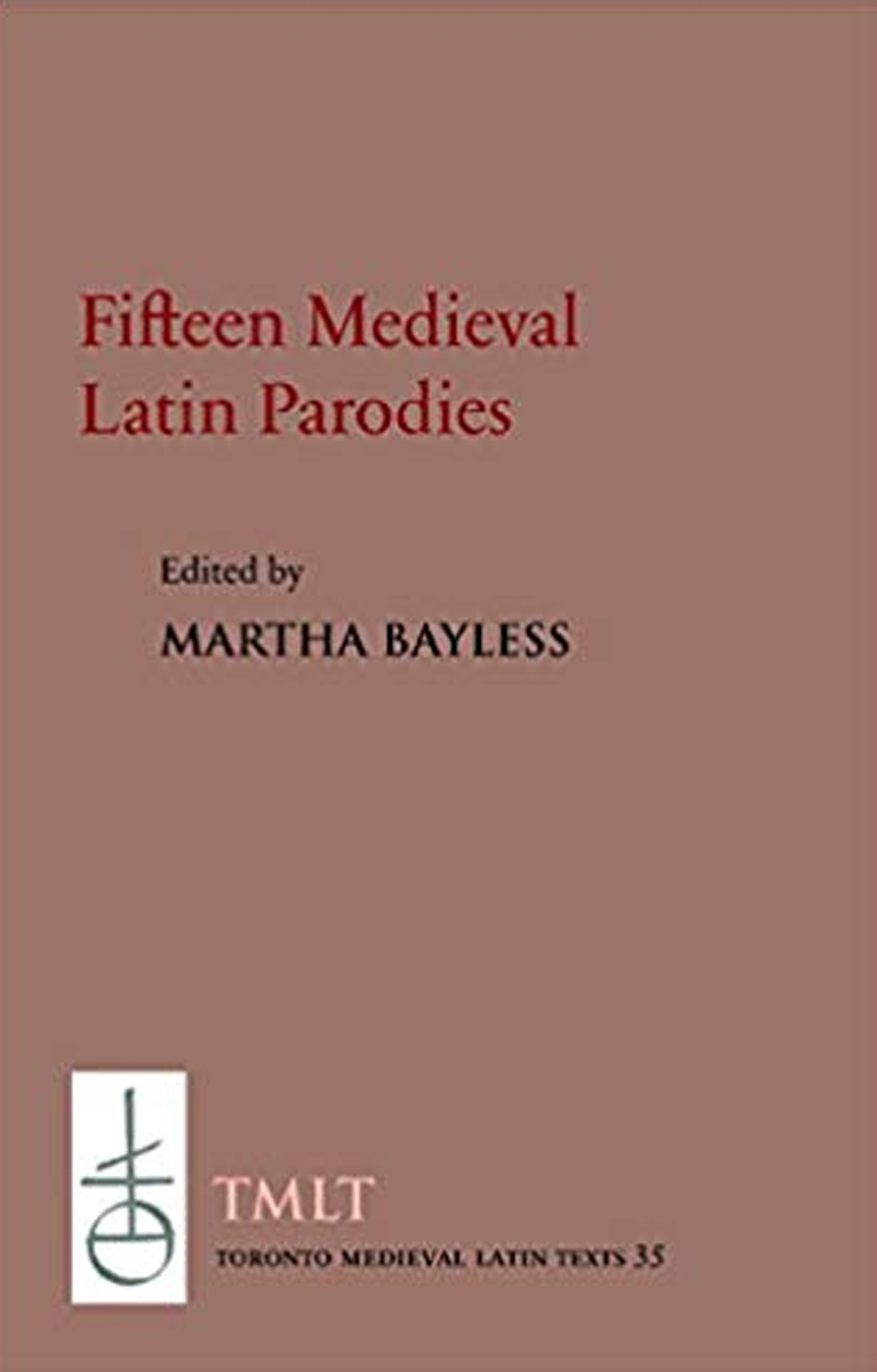
In Lewis Carroll's Alice's Adventures in Wonderland Alice meets a Duchess who is holding a pig dressed like a baby. A nearby cook is using too much pepper, causing the pig-child to sneeze and cry. To calm him the Duchess sings:
Speak roughly to your little boy,
And beat him when he sneezes:
He only does it to annoy,
Because he knows it teases.
I speak severely to my boy,
And beat him when he sneezes:
For he can thoroughly enjoy
The pepper when he pleases.
Carroll tells us the Duchess shakes the child violently at the end of every line. If one searches online for the words of the poem, one will find comments from outraged people who say no one should ever treat a child this way.
Such is the fate of parody. For in 1865 when readers first encountered this parody, it evoked gales of laughter, not outrage as it was a parody of a widely circulated poem, ‘Speak Gently’:Footnote 1
Speak gently! It is better far
To rule by love than fear;
Speak gently; let no harsh words mar
The good we might do here!
Speak gently to the little child!
Its love be sure to gain;
Teach it in accents soft and mild;
It may not long remain. (stanzas 1 & 3)
This example highlights the main goals of parody - to imitate the original document as closely as possible in all aspects save one, namely, the intent. The more a parody subverts the original, the funnier it seems.
In her slender and sensibly priced new book, Martha Bayless reminds us of all this as she promotes the literary merit and entertainment value of medieval parody. This review will first give an overview of the book and then offer an opinion on its potential for use as a classroom text.
The book's 15 texts are all ‘previously unedited independent versions, differing partly or substantially from similar texts’ (4). Some are quite new to this reviewer while others have appeared elsewhere in different versions. The parodies are loosely grouped by type (e.g. drinking songs, Biblical parodies, mock sermons). They range from one page in length to as many as 213 lines of text, and are a mixture of prose and poetry. A short preface neatly lays out the history of medieval parody and specifies its authors and audience. A single page is devoted to the differences between classical and medieval Latin, although help is offered throughout in the form of notes. Prefaces accompany each selection and tend to be well written and to the point with enough scholarly information and bibliography for those who wish it but not so much as to dampen the interest of, say, a third year Latin student.
The notes are far ranging. Some address peculiarities of language or offer cultural background against which to set the joke. In texts such as the ‘Money-Gospel’ the majority of the notes direct the reader to the original line in the Vulgate that is being parodied. At other times translation or grammar help might be offered. There is no glossary but there is a lengthy ‘List of Scriptural Citations’ at the end of the book.
Anyone who has an interest in medieval Latin will find much of interest in this book and those for whom the Middle Ages seems mostly to be a parade of kings, popes and saints, will do well to acquaint themselves with these texts written by sharp-witted and well-educated people.
The amount of humour one finds in the texts will vary according to one's immersion in Medieval literature. To be appreciated at its best, parody requires the reader to make an immediate connection between the original and the parody. To someone such as myself, who grew up hearing the Gospels regularly read in Latin the humour is evident. For others, even footnotes do not help much. Bayless does an admirable job of listing Gospel verses being parodied, but the uninitiated must then look up the verse. Time is the enemy of humour.
This brings us, inevitably, to whether this material, so carefully laid out by the author, might be used in a lower level Latin classroom and if so, how? The answer to the first question is an unequivocal yes. Students need to see that it is quite possible to laugh in Latin. The short and long sermons of St. Nobody (#8 & 9) perpetuate a joke type that goes as far back as the Odyssey. Medieval authors created a Sanctus Nemo and (mis)used Biblical passages to cobble a life-story for him. The ‘Sermon on St. One-Another’ (Sanctus Invicem, #10) offers equal potential when St. Paul asks his readers not to ‘help one another’ but to ‘help Invicem’. The two passions of the lascivious monk (#11 & 12) in which perfectly harmless lines are twisted to humorous have equal potential. For example, the monk, having seen a beautiful woman, says ‘Domina, postquam vidi te, factum est cor meum tanquam cera liquescens in medio uentris mei.’ The parodist has turned Psalms 21.15 quite on its ear.
Other selections will appeal either more or less as the reader's inclination and preparation dictate. The ‘Monk-Grammar’ for example, is a parody on a tenth century grammar, itself based on Priscian. The ‘Philosophers’ Debate’ (#3) is far more recondite.
Teachers looking for some material to enliven a moribund class will find it in this well-researched and approachable volume. But it will require work on the teacher's part. Vocabulary will have to be provided and the existing notes on grammar and usage will need amplification. Medieval prosody will have to be taught. More importantly, the teacher should make the students aware of the original text long before the parody is introduced. The ideal text for this is the volume's first one, the Vinum bonum et suaue, which is a parody of an entire twelfth-century hymn for the Annunciation, Verbum bonum et suaue. The two can be compared line by line.
It should be pointed out, too, that some institutions will have a dim view on texts which so ably poke fun at established religious texts and practices. So teaching medieval parody might be difficult, but, as the world-renowned Shakespearean actor Edmund Kean (1787 – 1833) is reported to have said on his death bed, ‘Dying is easy; comedy is hard’.
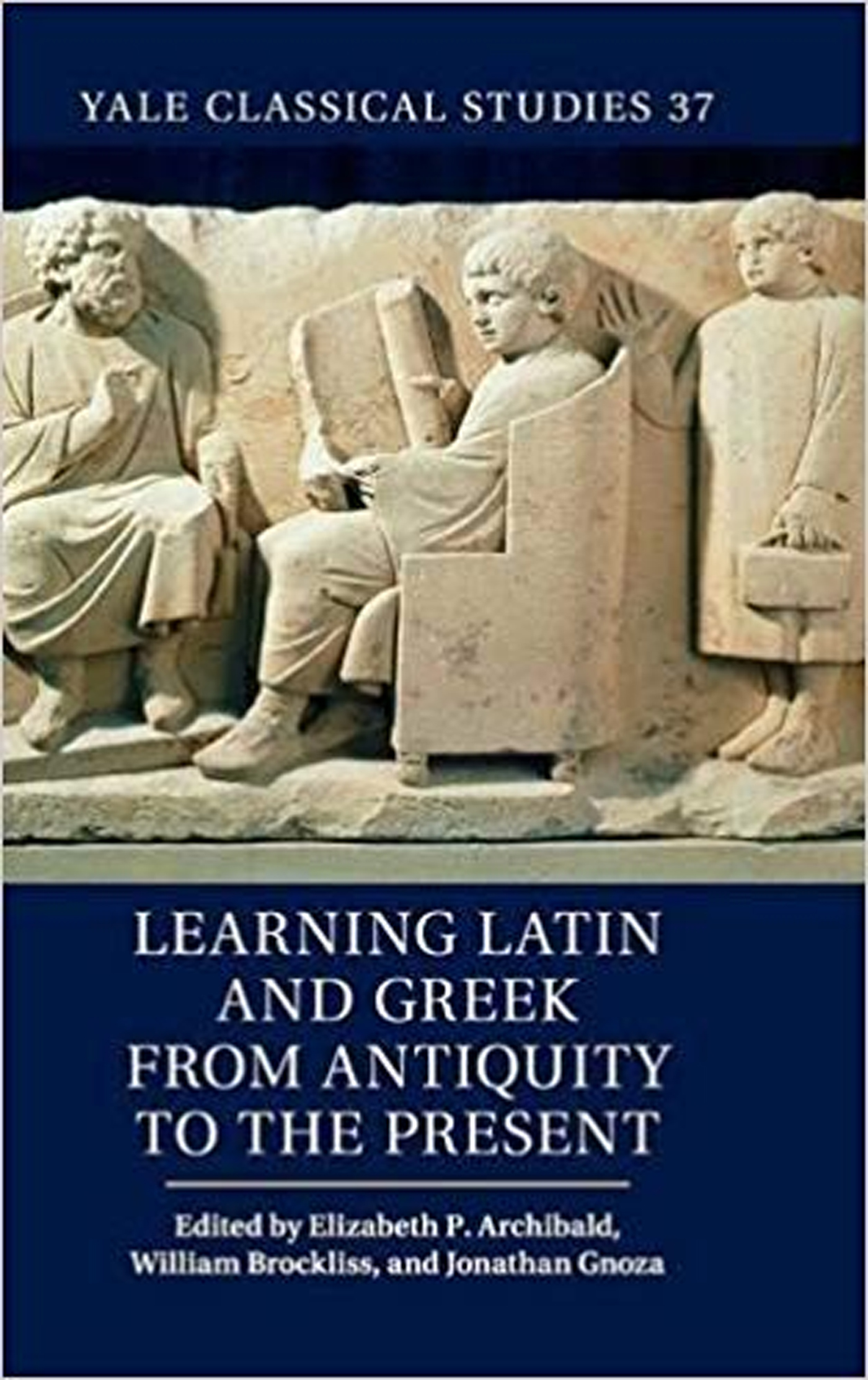
‘You taught me language, and my profit on't Is I know how to curse. The red plague rid you For learning me your language!’
(Shakespeare, The Tempest I.ii. 364-6)
‘War to the books! They are our worst enemies, and those who possess them will have power over all their fellows. The man who knows Latin can control and command the people in his service. Down with Latin!’
(Rénan, trans. Vickery, Caliban: A Philosophical Drama Continuing ‘The Tempest’ of William Shakespeare, p. 42) (See p. 200 of the book under review.)
In both their spoken and written forms, in both their standard and non-standard forms, both Latin and Greek were linguae francae for centuries, Latin in the West, Greek in the East. If the Greek-speaking world had not contracted as a result of the Arab conquests and Ottoman (and Slavic) incursions, Greek as well as Latin would have a claim to have been a world language. Classical Latin (hardly ever, anywhere, any other form) and Ancient Greek, i.e. classical Attic Greek, are learned in many parts of the world today, though in diminishing numbers just about everywhere, and whatever the interest in other aspects of ancient Greece and Rome. That is the background to this book and this review.
The book arose from a conference held at Yale University in 2009 entitled ‘Learning Me Your Language’ (see the quotation above, though what language Caliban refers to is disputed).
The book is concerned more with learning materials than with learning methods, and, as the title suggests, with learning rather than teaching. Even so it will be of interest to present-day teachers (or even advanced learners) of Latin and Greek, if only to show what gains have been made in both teaching and learning, and (in the last few chapters) what losses have been incurred in learners and teachers.
The 14 chapters of the book span chronologically ancient Egypt, Medieval Europe and England, Renaissance Italy, Mexico, Russia, France, USA and the UK, from Latin learning materials for native Greek speakers in Roman Egypt to the Cambridge Latin Course. Not counting cc. 1 and 14 (the introduction and an ‘Epilogue’), three chapters are concerned with learning Greek, five on learning Latin, one on Latin and Italian, and three on both Latin and Greek. There is an emphasis therefore on learning Latin, which becomes more pronounced the closer to the present day the book gets. There is a lengthy bibliography, a much shorter index, notes on the contributors (mainly from USA) and some illustrations (mainly of papyri and manuscripts).
The only kind of learner the book is concerned with is a non-native speaker learning Latin or Greek as a second language. Although standard Latin and classical Attic Greek were learned for centuries by native speakers as if they were second languages, none of the contributions is concerned with this category of learner. Nor is learning to read and write non-standard Latin and the lower registers of koinê Greek by native speakers.
There were no native speakers of Latin after the end of the first millennium CE, with the possible exception of Italy. All the Latin learned or taught was standard Latin, for speaking as well as for reading and writing, taught as a second language of course (the first language was a vernacular, Romance or otherwise). Greek continued in use unbrokenly as a first language by native speakers, as some form of the koinê until the medieval period, and was learned by some, to varying levels, as a written language. Classical Attic Greek continued to be learned by native speakers in all periods as if it were a second language. Non-native speakers of Greek learned all the varieties of Greek as a second language, if not third in the case of classical Attic Greek, if they had to acquire basic literacy in koinê Greek as a prerequisite.
The reader is not likely to acquire any practical help that could be of use today with learning or teaching Latin or Greek. Most chapters are of historical or scholarly interest, in many cases on account of the learning materials used, e.g. a Latin grammar book in Anglo-Saxon devised by Aelfric, the first of its kind (chapter 6).
There is an introductory and a concluding chapter. The former surveys and usefully summarises the contributions. The concluding chapter by Emily Greenwood I found one of the more satisfying. The chapter by Robert Black on using Latin in Renaissance Italy to teach literacy in Italian — if that is what it is mainly about — I found very indigestible, consisting as it does mainly of lengthy footnotes. Actually, most of the book until one reaches the 19th century is scholarly in both tone and treatment of its subject matter. Even the downbeat accounts of the dismal state of Classics learning in present-day UK and USA I found a welcome change after some of the earlier chapters.
The book is an American publication (in the Yale Classical Studies series). Most of the contributors work in the USA or Canada. But the book is not transatlantic-oriented (there is only one chapter on Classics in the USA — and very interesting it is too). Even so there are some gaps in the narrative as far as the UK reader is concerned, e.g. the ‘Direct Method’ of teaching Latin in the UK, and the Renaissance equivalent. The Open University's Classics courses (now imperiled because of ‘the cuts’) and their mode of delivery, and other variants of learning the languages outside a classroom, are barely touched upon. Nor are beginners’ courses in conventional universities, nor how successful they are (the picture is a mixed one, apparently). Probably more people learn Greek to at least A level equivalent standard at a university than study A level Greek at school. (There is a need for an appropriate course book for such people.) Also, there is a chapter based on the Cambridge Latin Course, but nothing on any other courses either in Latin or Greek, especially courses that take a very different approach to learning the languages. And not a word about Orbis Pictus or similar books.
Social discrimination of one kind or another where learning Classics is concerned is a given, from the treatment of Caliban to the indignities meted out to women in France. It is only socio-economic elites, mainly composed of males, that have ever learned standard Greek and Latin, except perhaps for a couple of decades in the middle of the 20th century in the UK. (Just think of it: for not much more than 20 out of more than 2,500 years, and even then to a small percentage only of the ‘lower-class’ age group.) It appears that we have learned almost nothing from history here. There may not be any obvious discrimination in our education system against females any more; but it is only middle-class females who are able to take advantage of this as far as learning Latin and Greek is concerned. The lower-class females are now discriminated against equally with the males, so some progress is being made.
In spite of the best efforts of people like the editor of this journal, many teachers teach as they were taught (or so it is or used to be said), especially if they have reason to believe that they were taught well. This may have its place if you were in fact taught well and if you are teaching people like yourself. But for how many learners will this be the most appropriate and effective way to be taught? And teaching the subject rather than the student is a very limited and limiting experience for teacher and taught. Sticking unremittingly to the subject is even more restricting. This book will provide object lessons in how not to teach, and what happens to your subjects if the lessons are not learned. It will provide very little positive guidance, however — not that it sets out to do so.
The few people who learn Latin and Greek today do so in different circumstances and for different reasons from those of people in the past. On the whole people today choose willingly to learn the languages, especially Greek. The only people compelled to learn them, and only in the case of Latin, are pupils at selective schools, especially the better-known independent schools where Latin is compulsory for all, in many cases for several years.
But compulsion can take various forms. In the past most people who were not actually compelled to do so by authority were, or felt themselves to be, compelled by circumstances, and chose unwillingly to learn Latin and Greek: it was the necessary means to get what they chose willingly to do or to have. Genuine Latin lovers and Hellenophiles were in a minority, scholars and litterati mainly. Once the vernaculars were well enough developed to do the jobs previously done by Latin (by 1800 at the latest), Latin was increasingly abandoned, confined more or less to schools, universities and seminaries and other ecclesiastical institutions. Soon the main reason for learning it (apart from as a matriculation or course requirement for certain universities) was to teach it, usually to people who didn't want, and by now did not need (as they saw it), to learn it. Nobody now needs to learn it to get what they really (they think) want. Most of the pupils who are still compelled to learn it — and don't believe the stories that everybody loves Latin really (do they say it about any other subject?) — must think they are the victims of procrustean perverts. The most unfortunate of them are still taught in ways that they would recognise from certain chapters in this book. Learning materials though are generally more accessible and more attractive than most of those available to learners in most periods of the past. And who knows how many people would choose to learn the languages if they were given the opportunity. If young people who are denied the opportunity to learn Latin and Greek can get a First (an increasing percentage) in other subjects, they should be able to do well in the fearsomely difficult (allegedly) Classical languages. (Yes, I do realise that Classics is not just for high-flyers.) On the whole we have better teachers now and better and more varied materials. Are we making the most and best use of them? I don't think so.
To conclude, much of the book is of antiquarian interest only. Opportunities have been missed for exploring certain contemporary approaches to learning and teaching the languages. Other types of learners than non-native speakers could have been considered. The social, or rather anti-social, dimension of learning Latin and Greek, remarkably constant from antiquity to the present, should have been addressed more directly. There are still too many Calibans, educated up to a point, excluded outsiders beyond that point. A book for historians of education rather than practising teachers. A lot of the information contained in the chapters more relevant for the latter is available elsewhere.
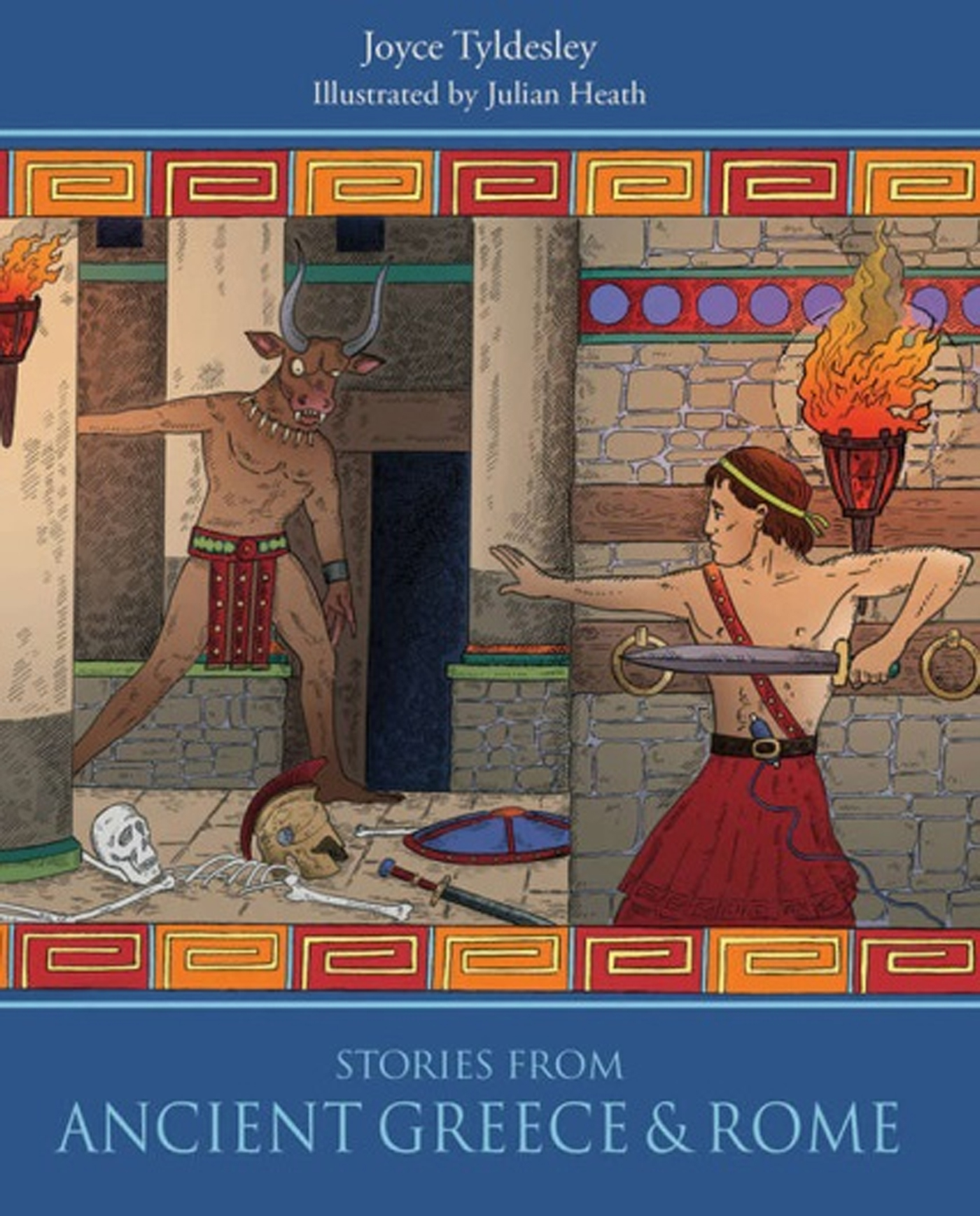
Joyce Tyldesley has created an engaging storybook that is an accessible and intriguing introduction to the Classical world for young readers. The book is aimed at primary school children aged 7-11 and, depending on reading ability, is something that can be enjoyed independently, with an adult or with their peers at school.
The book starts with a brief introduction to both the Greek alphabet and Roman numerals and gives the opportunity to write the child's name and age into the book. It is then divided into ten well-chosen myths, with one being set in ancient Rome and the rest taken from ancient Greece. Tyldesley explains that she has chosen the ‘most exciting tales’ (page 7) to tell and covers episodes in the lives of Persephone, Pandora, Theseus, Icarus, Atalanta, Midas, Perseus, Arachne, Oedipus and Romulus. Most of the stories are stand-alone episodes and so can be read in any order.
There is a set structure for each chapter, which includes the story itself, further explanation of either the background or meaning of the story, a few comprehension questions and an illustration that can be coloured in. The book ends with a glossary of people and places mentioned, as well as answers to the comprehension questions, making it a useful study tool either at home and in the classroom. Julian Heath's excellent illustrations bring the stories to life and are a wonderful addition to the book. However, I do wonder whether some younger children may find the illustrations difficult to colour in as a number of them are fairly intricate.
Each story is written in accessible and engaging language and none are so long that shorter attention spans might wander. There are, however, several typos in the text. The addition of the comprehension questions gives the opportunity for further discussion but they are at times too simplistic and do not always stimulate higher-order thinking that would help develop deeper understanding. The questions are still a useful starting point and allow for either an adult or the child themselves to ask their own questions that are appropriate for the age and ability of the reader.
This is an attractive and appealing collection of ancient myths which has been carefully thought out for younger minds. It will be a useful book for anyone wanting to introduce primary school children to the ancient world either at home or in school.

Why study Latin, and when? The adolescent brain certainly has the energy and flexibility to acquire languages; but the brain of an adolescent often has other things to think about. Learning a new (or old) language comes less easily to the more elderly, but is very good mental exercise. And an older person brings to the study of language everything she has learned from life. For Ann Patty, the study of Latin has been a matter of life and death. Her long and successful career in publishing came to a sudden end in the midst of the financial crisis of 2008, and she found herself, at the age at which her mother had begun an 8-year terminal decline, determined not to follow that path. Living with Latin would be the way she would avoid dying.
This memoir is in the first instance a family romance. Ann Patty grew up in the 1950s and 60s in Oakland, CA, with a traditionally patriarchal father and a mother conventionally subjected to patriarchal expectations of marriage and family life. Her mother had studied Latin in high school, and won an award for it; but then had not gone on to college. And she had an older brother, who got her interested in French, and in language and literature more generally. Patty followed her brother to Berkeley, and in the course of her studies underwent a feminist awakening. An acquaintance with a couple of women who worked in publishing in New York made her decide to do that herself.
We don't hear a lot about Patty's publishing career, but in her account of her study of Latin following her forced retirement her editorial experience is everywhere in evidence. The love of language that drew her to that line of work has survived intact, and been enhanced. She writes as one with long experience in working with good writing, and working to make it even a bit better. Her sentences are clear, both when she is narrating and analysing. Her paragraphs are composed, and the transitions are deliberate. The illustrations are apt and vivid, and the voice is pitched just right. Patty learned her Latin by auditing several courses over several semesters at Vassar, which is not far from the cabin in the country to which she'd moved from Manhattan. As she learns Latin she also observes the other students, all Vassar undergraduates. Either angle is likely to be of interest to the teacher of Classics. This one must say - her explanations of Latin grammar and syntax are not always strictly correct, though I don't want to be pedantic about it: it is very much to her credit that Patty undertook and stuck with her study of Latin. She has read a large quantity and wide variety of Latin authors, and has rendered some creditable translations of the passages she discusses.
Throughout the memoir, Patty connects her Latin with her living. She may or may not inspire others to learn Latin as she has, but clearly the experience has done for her all that she could have hoped, and more.
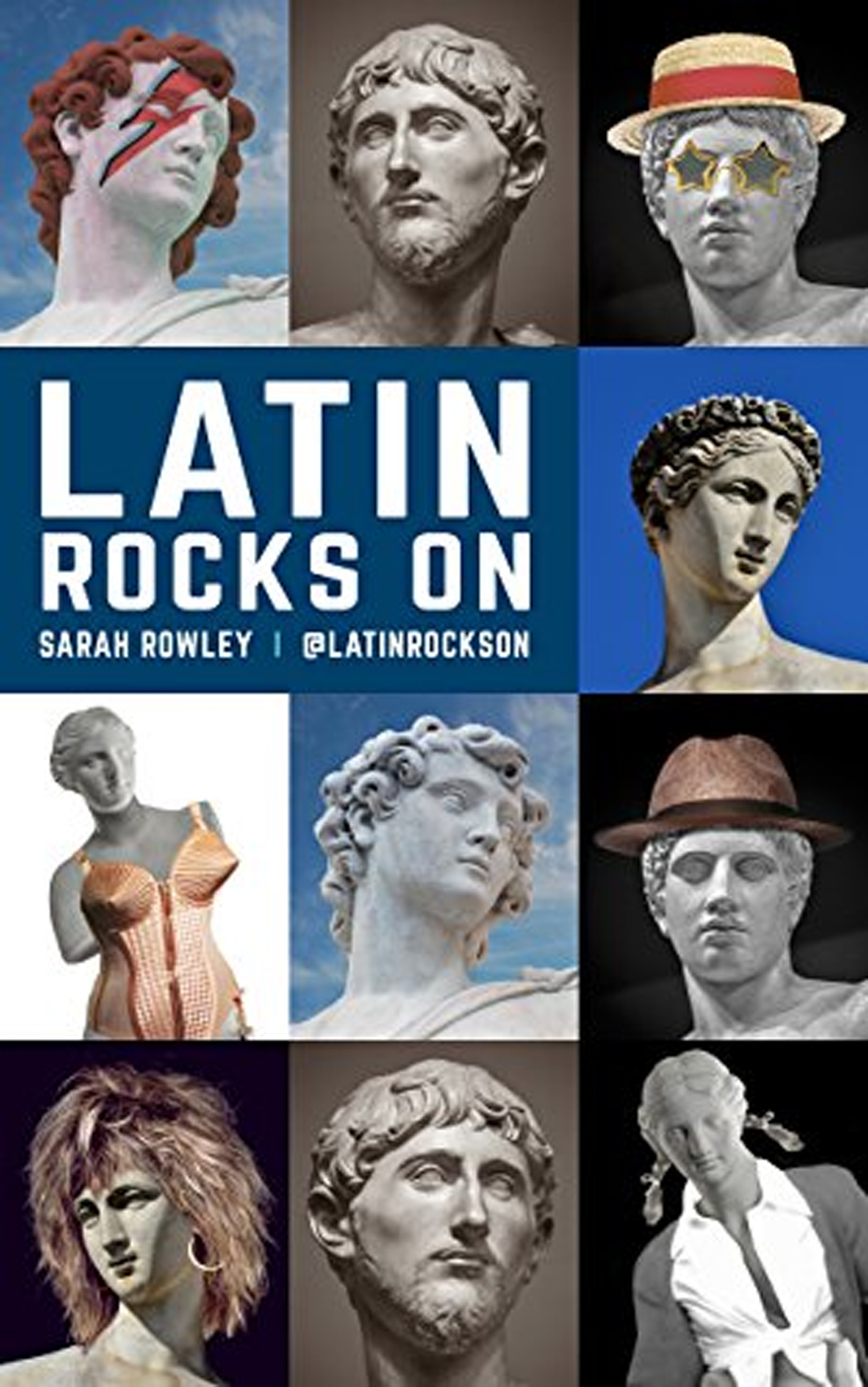
Finally! A way of educating the youth of today in the music of yesteryear, all through the medium of Latin!
We've all been there, haven't we? The bewildered expressions of a class of Year 11s as you make a seemingly obvious cultural connection to a pop song, only to realise your students were not even born at the time of its release and have never heard of the artist in question. The looks of pity follow. Rather than accept that the glory days of music are indeed over, why not educate students in popular culture and Latin at the same time? Latin Rocks On is the answer to this quandary and provides a bit of light relief for students, teachers and enthusiasts of Latin alike.
In essence, Rowley's Latin Rocks On is a refreshing attempt to modernise Classical translation through Latin versions of song lyrics from the 1960s to the present day. The concept for the project originated from the Twitter handle @LatinRocksON and it now takes the form of a reasonably priced e-book. The songs featured in this e-book cover a variety of musical genres; the artists featured range from Sinatra to Shakira, and from The Jackson 5 to Jay-Z. 11 different musical categories are identified, including Rock-n-Roll, Motown and Teen Idols. The selection of these groupings seems slightly arbitrary and would perhaps be clearer if arranged in chronological order according to release dates, as there is significant overlap between categories. In keeping with its Twitter-based origins, only a couple of lines of lyrics are translated for each song and sometimes this is at the expense of ‘grammatical prowess’, by the author's own admission. This book therefore is arguably not for the die-hard Latin grammarians or traditionalists out there. What is abundantly clear, however, is that this is potentially an excellent resource for lesson hooks and starters for secondary school Classics teachers. This text could also serve as an aide-memoire for selected items of vocabulary and as a means of encouraging spoken Latin in the classroom. It was evident that much thought has gone into an appropriate translation for each lyric, even at times adapting the lyrics to fit the intended rhythm. This does not always come off – some of the lyrics are a bit of a mouthful (tu deprehendis meam pecuniam, Kanye?) – but the attempts are amusing nonetheless. The presentation of the e-book as presumably a work of self-publication is somewhat basic and resembles a hyperlinked PDF document. The attractive cover page with various attempts at what appears to be ‘Pimp My Statue’ reflects the innate humour of the project. Perhaps future revisions of the book could adopt a more professional and attractive layout; selected lyrics accompanied by a statue adapted to look like the artist in question – and perhaps even a full verse could be provided for the most popular songs.
The author implies in the Foreword to the e-book that she would like to make Latin more accessible and relevant through this project. This is an admirable intention and crucial to the survival of Classical subjects in schools. The e-book is however, as it stands, not terribly accessible for the beginner. If a glossary of key words had been provided, either in the margins as a text box or a selection for each category at the back of the publication, this would have made it more accessible to those with a smattering of Latin and those returning to the language. Additional vocabulary support would also be helpful for teachers in terms of providing in-class differentiation. In reminding students of the significance of Latin as a spoken language, this e-book has the potential to increase students’ confidence in pronunciation and support a communicative approach to Latin. However, Latin Rocks On is also a project likely to become dated and in need of regular revision to appeal to future generations.
In summary, as a guessing game, lesson stimulus or extension challenge, Latin Rocks On is a novel idea and an interesting resource, as well as a virtual stocking filler for any Latin enthusiasts out there. It has considerable potential as a motivational tool in the Latin teacher's box of tricks and offers a welcome departure from traditional approaches to the subject. This e-book should come with a health warning though - these songs will be stuck in your head for the rest of the day! Don't blame it on the good times - culpate saltatum!

Professor Mary Beard begins her recent primetime documentary on Julius Caesar by observing a birth. Her purpose, as so often in her ever-enjoyable programmes, is to challenge a common assumption: in this instance, the story that Caesar was himself born by caesarean section. Why start with a myth? The point is to remind us via this everyday phrase that Caesar ‘changed his own world in unimaginable ways – and he's left a pretty big mark on ours’ – a mark of which most people today aren't consciously aware. And this is Beard's chosen theme: not a retelling of the story of Caesar's life in detail, as the BBC series I, Caesar did so well back in 1997, but an examination of his contemporary legacy and relevance.
Prompted by the comments of a bemused bunch of tourists hovering around Caesar's statue on the Via dei Fori Imperiali in Rome, Beard gives us a quick account of Caesar's assassination – the only event in his life most people know anything about, thanks mainly to Shakespeare. From his murder, we're told, we inherit the concept of the political backstabber – illustrated without comment by images of Boris Johnson and Michael Gove.
Using a vague and surprisingly unoriginal chessboard visual metaphor, Beard suggests that Caesar's early political career can be passed over with a few sweeping sentences about sneaky political manoeuvring – ‘We don't know much about the detail’, we're told. This is one of the less successful segments of the programme, not least because what we do know about this period of Caesar's life is far, far more interesting than the scrap we're thrown – the probably apocryphal story about him weeping in front of the statue of Alexander in Cadiz at how little he had achieved by his early thirties. However, Beard does point out, quite rightly, that Caesar certainly wasn't always marked out for the success he achieved – he wasn't destined, as some of our ancient sources assume, to dominate the state in the way he eventually did.
Sadly, we skip the glorious excitement of the 60s and head straight for Gaul, dropping in where many documentaries on Caesar have chosen to start before. As in Bethany Hughes’ Eight Days that Made Rome, our attention is graphically drawn to Caesar's ruthless treatment of the Gauls and Germans he defeated – we're reminded that the idea of Caesar simply as a great general is a dangerously sanitised view of history. We then step away from Caesar for a moment to investigate what war was like for the ordinary ‘squaddie’ and are shown a remarkable set of slightly later slingbolts with rude messages to the enemy. Teachers may wish to bear in mind that the nature of the messages – some of which, in typical Beardian style, are read out - probably makes the programme unsuitable for younger students, although there's always the option of the fast-forward button.
From here on in, the links between Caesar and the preferred tactics of modern political leaders come thick and fast. The pithy, elegant boast veni, vidi vici was the ancestor of the snappy soundbite or the tweet; Caesar's commentaries, sent annually to the senate, were a form of advertising, designed to maintain his popularity even when he wasn't in Rome; crossing the Rubicon the equivalent of ‘some commander-in-chief rolling his tanks into Parliament Square or Capitol Hill’; coins and statues thrust his image into the everyday lives of Romans of all classes. There's an interesting segment on Caesar's reforms to the calendar, which had fallen wildly out of sync with the seasons, thanks to neglect and political abuse. Arguably, this is Caesar's most enduring bequest, since our modern western calendar is the direct descendant of his. At the time, we're told, his ‘friends’ (Cicero is meant – none of Caesar's Roman contemporaries is mentioned by name) joked about him taking control of time itself.
Irrespective of the content, Professor Beard is a joy to watch as she hops between the Forum Romanum to talk to an awestruck couple about Caesar's funeral, an Italian barbershop to observe how Caesar might have used his laurel wreath to keep his thinning hair in place, or to a Kentish beach in very fine yellow wellies to read us Caesar's description of the Britons – the earliest we have. As ever, her style of presentation is well-designed to entertain, educate and encourage the viewer to share her infectious enthusiasm for her subject.
Overall, Beard's comparison between Caesar and 20th-21st century politicians at times feels simplistic and heavy-handed. It comes dangerously close to making Caesar sound like just another self-obsessed, authoritarian ‘power-grabber’ and doesn't really allow the viewer to understand the man behind that mask or the context in which he rose to power. Caesar's enormously eventful, colourful and endlessly fascinating life offers so much more than it is allowed to deliver here and is likely to send viewers with an existing knowledge of the period away from the table hungry. I would happily have seen the superfluous conversation with the author Robert Harris, for example, dumped entirely in favour of one or more of the parts of Caesar's life that never make it into television documentaries: his kidnapping by Cilician pirates, perhaps, or his famously controversial speech during the debate on the fate of the Catilinarian conspirators in 63. On the other hand, Julius Caesar Revealed very obviously isn't aimed at classicists or ancient historians: it's aimed at a general audience – like those tourists back at the beginning taking selfies next to Caesar's statue – and what it does extremely well in the limited time it has is to explore engagingly and very accessibly Caesar's cultural and political significance for the non-specialist. It would be an excellent introduction for Year 11 or Year 12 students to the ‘Politics of the Late Republic’ A level Classical Civilisation unit or to raise awareness of the relevance of the ancient world in general.


